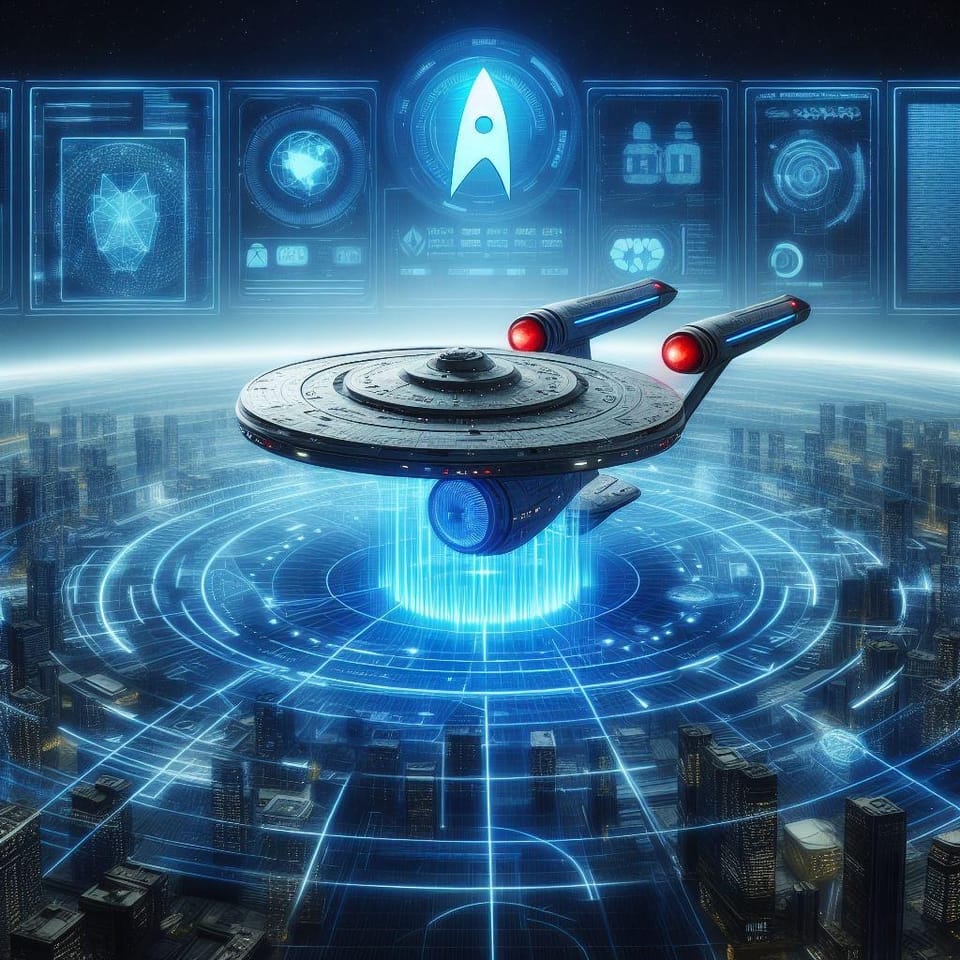The Final Frontier

In the vast expanse of the digital universe, akin to the uncharted cosmos explored by the starship Enterprise in Star Trek, modern-day cybersecurity stands as the final frontier—a domain rife with complexities and challenges that echo the adventures of Captain Kirk and his crew. As we embark on this exploratory essay, let us navigate the nebulae of network security and the wormholes of web vulnerabilities, drawing parallels with the iconic science fiction saga.
I. Shields Up: The Perimeter Defense
Just as the Enterprise raises its shields in the face of unknown cosmic entities, so must our cybersecurity systems erect robust firewalls and intrusion detection systems to thwart the barrage of cyber threats. The complexity arises not just from the sophistication of these digital assaults but also from the sheer volume and variety, much like the diverse alien encounters in the Star Trek universe. Phasers set to stun, our security protocols must be versatile and adaptive, ready to respond to the ever-evolving tactics of cyber Klingons and Romulans—hackers and malicious actors who seek to exploit any vulnerability.
II. The Holodeck: Virtualization and Its Discontents
The holodeck of the Enterprise is a marvel of virtual reality, creating worlds within worlds. Similarly, modern cybersecurity grapples with virtualised environments and cloud computing challenges. While offering flexibility and scalability, these platforms also introduce new attack surfaces—virtual realms where attackers can orchestrate their nefarious plots. Ensuring the integrity of these virtual spaces is akin to preventing a holodeck malfunction that could endanger the entire ship.
III. The Borg: The Threat of Assimilation
Perhaps the most daunting adversary in Star Trek is the Borg, a collective that assimilates civilisations, stripping them of individuality. In cybersecurity, we face the Borg-like threat of ransomware, which hijacks systems and data, demanding a ransom for their release. The complexity here lies in the relentless nature of these attacks and the difficulty in recovering assimilated systems. Resistance may seem futile, but we can outmanoeuvre these cybernetic adversaries with the right strategies and backups.
IV. Warp Speed: Keeping Pace with Technology
The Enterprise’s warp drive allows it to traverse vast distances in the blink of an eye. Cybersecurity professionals must similarly accelerate to keep up with rapid technological advancements. The challenge is twofold: staying ahead of attackers who exploit cutting-edge tech and ensuring that our security measures do not lag behind our innovations. It’s a race through the stars, where the warp factor is the speed of our threat intelligence and response capabilities.
V. The Prime Directive: Ethical Considerations
Star Trek’s Prime Directive prohibits interference with the internal development of alien civilisations. Our prime directive in cybersecurity is to respect privacy and ethical boundaries while securing systems. The complexity here is balancing security measures with the rights and freedoms of users—a delicate dance between protection and intrusion.
To Boldly Secure What No One Has Secured Before
As we conclude this voyage through the cybersecurity cosmos, it’s clear that the challenges we face are as diverse and complex as the universe of Star Trek. From defending against relentless threats to navigating the ethical quandaries of digital privacy, cybersecurity professionals must be as resourceful and resilient as the crew of the Enterprise. With a spirit of exploration and a commitment to security, we continue to secure what no one has secured before boldly.
Engage!




